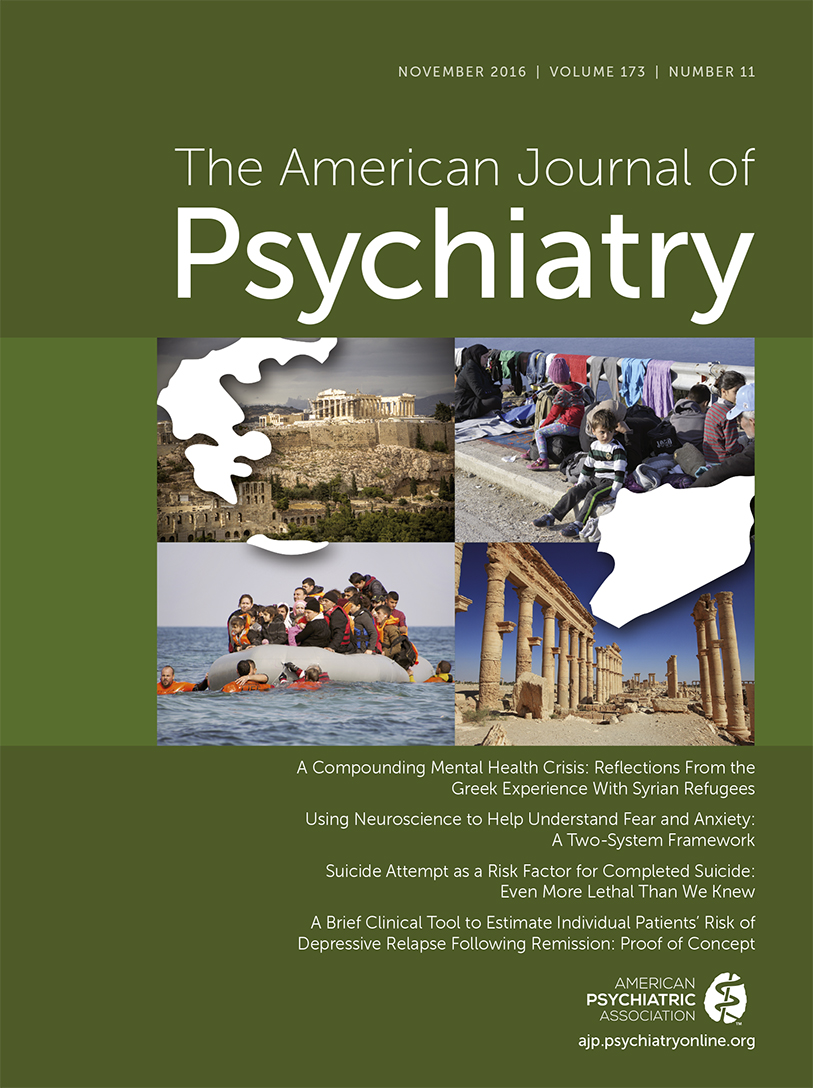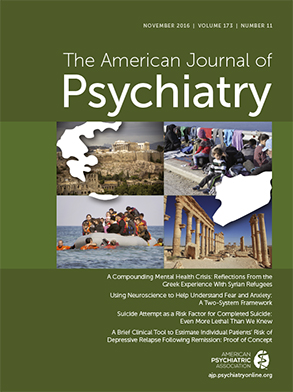Depression is a recurrent illness, and all too often a chronic one. The recurrence and chronicity of depression were demonstrated in a series of reports from the National Institute of Mental Health Collaborative Depression Study (CDS), in which 431 patients with major depressive disorder were followed for nearly two decades (
1,
2). Most patients (70%) recovered within a year (
3). However over a third (36%) relapsed within 12 months after their recovery (
4). One in five of these patients continued to be depressed for 2 years, and the majority remained persistently depressed for at least 5 years (
3,
4). Patients had significant depressive symptoms nearly 60% of the time during 12 years of follow-up (
5). Quality-of-life assessments over 10 years of follow-up depict substantial ongoing impairment and debility (
6). The clinical course of depression is grim.
Fortunately, we have a variety of effective treatments—pharmacotherapy and psychotherapies, which individually or combined can have a positive impact on the course of people with depression and can substantially reduce suffering. These effects have been well documented in many studies conducted across the world (
7).
What the literature doesn’t tell us is how often to follow our patients with depression. Even the APA Practice Guideline for the Treatment of Patients With Major Depressive Disorder is vague on the important issue of monitoring frequency (
7). Thus, we are left without guidance for individual patients. Who should be seen more often during maintenance therapy, and who should be treated more intensively during maintenance, is unclear.
The article by Judd and colleagues in this issue (
8) sheds light constructively on this important question: the article describes a clinical tool to predict who will relapse in the 6 months following full remission from a depressive episode. By full remission, the authors mean at least 8 weeks without any symptoms of depression—a very stringent criterion. The sample was drawn from the CDS study mentioned earlier (
1,
2). These patients filled out the Hopkins Symptom Checklist–90 (SCL-90) after at least 8 weeks of full remission (
9). This 90-item self-report questionnaire assesses symptoms for the past week across a variety of domains, including mood, cognitive, behavioral, and somatic. Fourteen percent (58 subjects) relapsed during the first 6 months after completing the SCL-90, and 86% (165 subjects) remained well during this period.
Is this information useful? The authors make a case for a resounding “yes.” The 5-year course for patients who relapsed was substantially worse than for those without a relapse; the patients who relapsed were depressed a significantly greater percentage of time—nearly 50% of their days, compared with about 1 in 7 days for the nonrelapsers. This information is useful clinically and could inform monitoring frequency by determining risk of relapse in the ensuing 6 months.
The authors identified 12 SCL-90 items that optimally predicted relapse within the ensuing 6 months. The greater the number of positive items, the greater chance of relapse. A score of 0 carried a 5.8% risk of relapse in the next 6 months, scores in the range of 6–9 had a 34% risk of relapse, and scores in the range of 10–12 had a 73% risk of relapse. These items reflect problems with anxiety (two items: feeling tense and worrying too much), which occurred over 40% of the time in the relapsers; with depression (nine items: feeling blocked, feeling pushed, feeling inferior, having low energy, being self-conscious, having headaches, crying easily, being easily hurt, and having trouble concentrating); and with psychoticism (having ideas that others don’t share). As discussed in the article, these items may reflect instability in several CNS systems, including neurocognitive, psychomotor, reward systems, fear circuits, and affective dysregulation.
Combining these items, we can identify patients with more overall instability and reduced resilience. These patients are at risk for relapse and should be followed more closely—more frequent visits, increased involvement with the patient and family, and perhaps more intensive treatment.
The article presents an array of statistics, including sensitivity, specificity, and positive and negative predictive value for each number of SCL-90 items endorsed, from one through 12. But the article does not recommend a specific score above which to increase vigilance. I would recommend that clinicians increase vigilance when three or more items are positive. This will identify over 60% of patients who will relapse and successfully screen out three-quarters of those who will not. My rationale is that the cost of a false positive is not that high. The patient will simply get more attention, perhaps more than necessary. But the cost of a false negative is high. The patient will not receive the increased attention that is needed.
A caveat is in order: The analyses supporting the creation of this clinical tool are exploratory, and replication is need. This is well worth doing.

